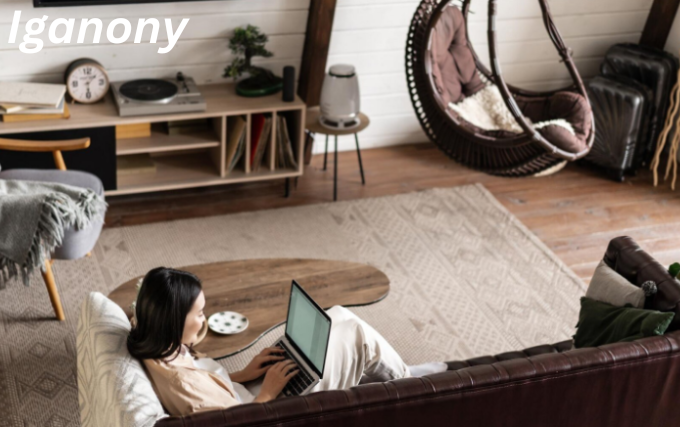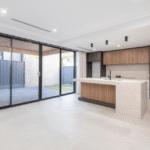The living room is many times the heartbeat of the household, a gathering place for comfort, social time, and just hanging out with family and friends. To maximize functionality in this essential space, it’s essential to design a layout that is functional, yet cozy at the same time. Whether dealing with a sprawling open area or a compact little room, finding the proper positioning can turn your living room into a cozy little haven.
Here’s a step-by-step guide on how to design your own comfy and practical living room arrangement based on your needs and preferences.
Consider a Sectional Sofa for Added Comfort and Flexibility
If you’re looking to maximize comfort and seating in your living room, a sectional couch is an excellent choice. This versatile piece of furniture offers ample seating for family and guests while enhancing the overall functionality of the space. For even more comfort, consider opting for a sectional couch with a sectional sofa with chaise. The extended chaise portion provides a cozy spot to stretch out and relax, making it ideal for lounging or taking a nap.
A sectional couch can also be a great solution for larger rooms, as it can define the seating area without taking up too much space. By positioning it strategically, you can create a more open flow in the room while still accommodating plenty of seating. Additionally, many sectional sofas are modular, allowing you to customize the arrangement based on your space and needs. Whether you prefer a left-facing or right-facing chaise or even a reversible configuration, this flexibility ensures that your layout can adapt to your preferences.
Assess Your Space and Needs
Before planning your layout, take a moment to assess your living room. Consider the following:
Room Size
Is the space spacious or compact? Large rooms can handle more furniture or create different zones, while smaller rooms may need a more streamlined approach.
Traffic Flow
Think about how you and others will move around the room. A good layout ensures that traffic flows smoothly without causing congestion.
Purpose
What do you mainly use the room for? Is it a place for movie nights, entertaining guests, or a reading nook? Knowing the room’s purpose will guide your layout and furniture choices.
Start with a Focal Point
Every well-designed room has a focal point — a feature that attracts attention and shapes the layout. Common focal points include:
TV or Entertainment Center:
If the living room is centered around watching television, place the TV or entertainment unit in a spot where it can be comfortably viewed from the main seating area.
Fireplace:
If you have a fireplace, position seating to take full advantage of the warmth and ambiance. A fireplace can often serve as the centerpiece of the room.
Large Window or View:
If your living room has a beautiful view or large windows, arrange seating to highlight the outdoor scenery or natural light.
Once you’ve identified the focal point, arrange furniture around it to create a balanced layout.
Choose the Right Furniture
When selecting furniture, comfort and functionality are key. The pieces you choose should be versatile and reflect your style. Here are a few tips for choosing and arranging furniture:
Sofa/Seating
Start with the main seating piece, like a sofa, which should face the focal point of the room. Depending on your space, you might want to pair the sofa with accent chairs for additional seating. Consider sectional sofas for larger spaces or smaller, modular pieces for a flexible arrangement.
Coffee Table
Place a coffee table in the center of the seating area to serve as both a functional and decorative piece. Ensure there’s enough space to move around it easily ideally, a distance of 18 inches from the seating.
Side Tables and Storage
Add side tables near seating for convenience. They can hold lamps, drinks, and other essentials. Consider furniture with built-in storage, such as ottomans or benches, to keep the room tidy.
Define Zones
In larger living rooms, it’s often helpful to create distinct zones for different activities. You can achieve this by arranging furniture to define areas for conversation, entertainment, reading, or even work. For example:
Seating Area:
Arrange the main sofa and chairs in a way that encourages conversation. A good rule of thumb is to keep seating within 8-10 feet of each other.
Reading Nook:
If you have the space, consider a cozy reading nook with a comfortable chair, a small side table, and a good reading lamp.
Entertainment Zone:
For homes with multiple activities going on in the living room, designate an entertainment area with a TV or music system, ensuring that it’s separate from other quiet zones.
Incorporate Lighting
Lighting plays a crucial role in setting the mood and functionality of the room. Aim to use a combination of ambient, task, and accent lighting to create a cozy and well-lit space.
Ambient Lighting
This is your room’s primary light source, which might include overhead ceiling lights or large floor lamps.
Task Lighting
Add table lamps or wall-mounted sconces for reading or other tasks. These lights help create a functional and comfortable atmosphere.
Accent Lighting
Use accent lights, such as LED strips or small accent lamps, to highlight decorative elements like artwork, plants, or shelves.
Lighting should be layered and dimmable when possible to adjust the mood for different times of the day or activities.
Use Soft Textures and Warmth
To make the living room feel cozy, introduce soft textures and warm elements. Textiles can help soften the space and add comfort:
- Throw Pillows: Layer a variety of throw pillows on the sofa for both style and comfort. Choose different textures, sizes, and colors to add visual interest.
- Rugs: A well-placed area rug can anchor the seating area and add warmth underfoot. Make sure the rug is large enough to fit under the main furniture pieces for a cohesive look.
- Blankets: A plush throw blanket draped over a sofa or chair adds a cozy touch and encourages relaxation.
Add Personal Touches and Accessories
The finishing touches are where you can really make the room your own. Personalize the space with items that reflect your style, such as:
- Artwork: Hang art or photographs that resonate with you. Consider a gallery wall or a statement piece above the sofa.
- Plants: Bring life to the room with plants. Whether it’s a tall indoor tree or small potted plants on side tables, greenery can instantly make the space feel fresher and more inviting.
- Books and Decorative Objects: Use bookshelves, decorative vases, or unique objects to give the room personality. Displaying your favorite books, family heirlooms, or souvenirs will make the space feel more lived-in.
Consider the Flow and Space Efficiency
When arranging your furniture, ensure that the layout doesn’t block pathways or hinder movement. In a small room, you may need to prioritize space efficiency. Opt for multifunctional furniture, like ottomans that double as storage or sofa beds for extra sleeping space.
If the room feels cramped, consider keeping larger furniture pieces closer to the walls and using smaller, lighter furniture in the center to avoid overcrowding. Conversely, larger rooms can benefit from a more expansive furniture arrangement, with clearly defined seating areas.
FAQs
1. What is the best layout for a small living room?
In a small living room, prioritize space-saving furniture, like a sectional couch or multi-functional pieces. Keep the layout open by arranging seating away from walls to maximize flow.
2. How can I make my living room feel more inviting?
Incorporate soft textures like throw pillows, blankets, and rugs, along with warm lighting and personal touches like plants or artwork to create a cozy atmosphere.
3. Can I use a sectional sofa in a small room?
Yes, a sectional sofa can work in smaller spaces if you choose a compact or modular version, allowing flexibility in arrangement without overcrowding the room.
Final Thoughts
Creating a cozy and functional living room layout is about balancing comfort, style, and practicality. By thoughtfully considering the room’s focal point, furniture choices, lighting, and personal touches, you can transform your living room into a space that feels inviting and serves your everyday needs. With these tips, you’ll be able to design a living room layout that perfectly suits your lifestyle and brings warmth to your home.







